How Germany and elegance turned out to be a great formula
Visiting the Classic Days car show and coming away with an unexpected point of view
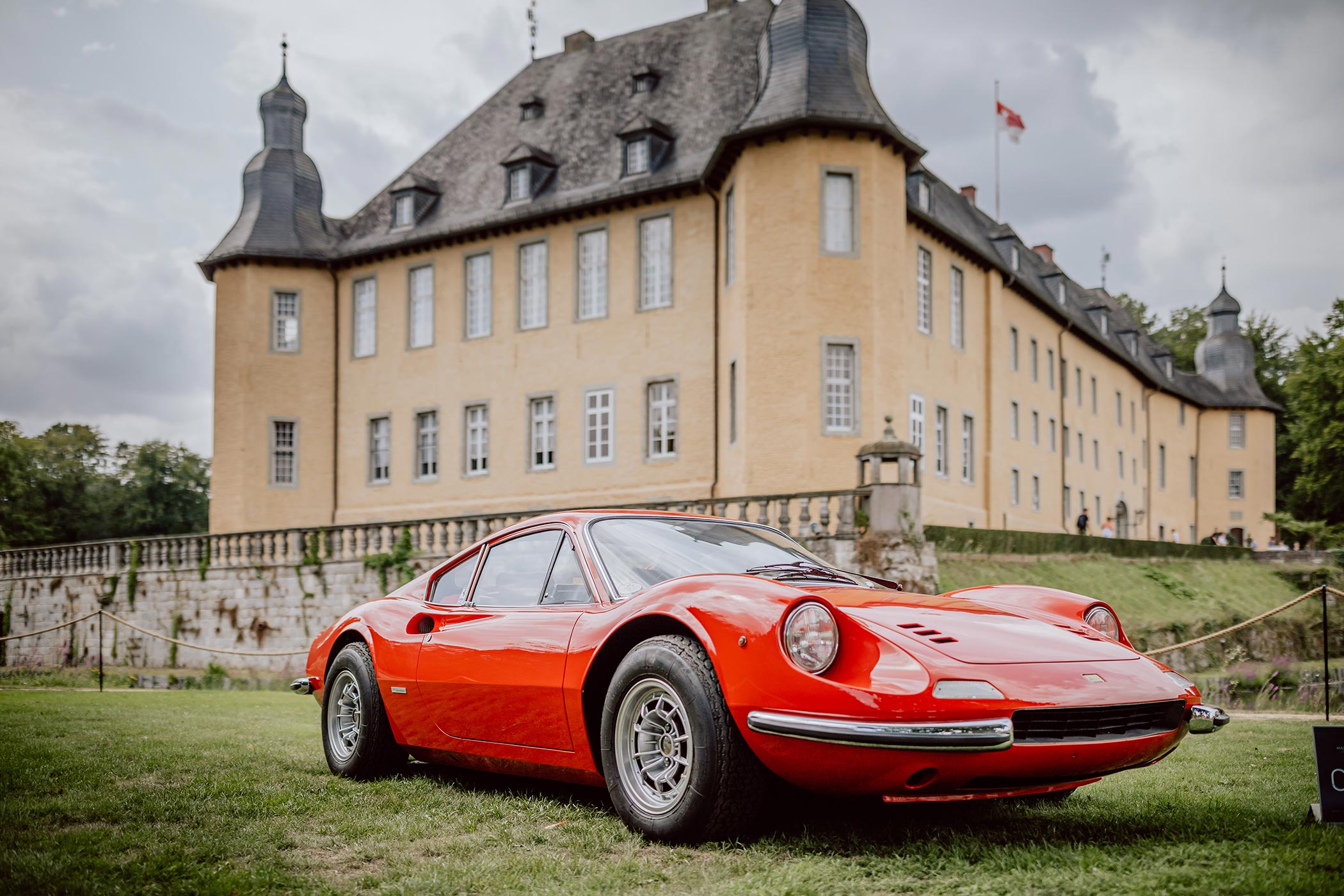
If someone says the word ‘Germany’, not a lot of people will start reminiscing about romantic afternoons full of classic values like elegance, delicacy, sensitivity or even the slightest susceptibility to following heart instead of function. But that’s wrong. Anyone who has actually ever really seen that country knows that this culture has so much more to offer than Autobahn, Autobahn, Autobahn. It’s always hard to speak for 85 million people but Germans do share a love for these classic values. The Germans are quite sensitive, in fact. I think the most beautiful German word is ‘Fingerspitzengefühl,’ which is literally translated as ‘the feeling in the tip of your fingers’. Yes, Germans are that sensitive indeed.
Now, let’s start by admitting that I’m not completely objective when it comes to ‘ze Germans’. Since I was born and raised in The Netherlands (Amsterdam, yes, of course, Amsterdam), I wasn’t supposed to really like them. I don’t want to mention ‘The War’ this early in my article, but let’s just say that my grandparents taught me to always be suspicious about our Eastern neighbours. All of that changed in my adolescence when I learned what love was by the hand and words of my first true love, a German girl. She showed me her country, taught me the language and the culture and made me learn to love that huge, very functional country with the very functional people who deep inside all cherished a knack for romance and elegance.
And when you combine elegance and mechanics, the love grows even further. Then you get a combination that only they, the Germans, truly understand. Last month, at the Classic Days Car Concours in West Germany, this love was on display in a way I’d never seen before. No, not even in Italy (and yes, I’ve been writing about cars for more than a decade).
Elegant Italian influences in architecture and cars
Against the backdrop of Schloss Dyck, a 17th-century early baroque castle on the outskirts of Düsseldorf, dozens of cars were on display, all of them meticulously restored or maintained, with their proud owners almost always right next to them. Some of the exhibitors were even dressed up in historic outfits, matching the style of their cars. Of course, this happens more often during classic car shows, but the Germans did it just a bit better. More precise. With dedication. And, yes, with elegance.
During dinner, I spoke to a classic car restorer who drives tens of thousands of kilometres each year to find and recover some of the continent’s greatest automotive creations. He looked like a fast-food employee but spoke about his cars with tender love and care, and it quickly became clear to me that he loved them more than just because of the gears and the grease. He fell in love with the curves, the rattling sounds that only old cars make and the smallest details that he could discover about the history of the vehicles he revived with his hands and heart. “I want to feel a car before I buy it,” he told me. “Every curve in every car has a story to tell, and I want to listen to it.”
Some of the cars on display were exactly what you’d expect them to be. An old Silberpfeile, a pre-war BMW, an Audi before it was Audi. But then there were also the creations that went far beyond the country borders, cars that were left to rust in their home countries and sought shelter in caring German hands. One of the most elegant cars ever made – or should it actually be called a car? – was a Delahaye 135 M Cabriolet. Coachbuilders like these French are nearly forgotten, but in pre-war Europe, they were the real artists who showed that cars could be sensual fantasy creations. Although cars like these aren’t made anymore the essence of their curvy sensuality still lives on in some modern cars such as the first Mercedes CLS (2004) or BMW Z3 coupé (1998) or any Bentley.
One of the most prominent attendees to share his passion for classic cars is Wilhelm Schmid, the longtime CEO of A. Lange & Söhne. He not only attended the show, he even participated, bringing no less than two of his own oldtimers to the Classic Days. The first oldtimer is a wonderfully restored beige AC Bristol roadster from the 1950s with bright red leather interiors and a wooden steering wheel. Its protection cover matches perfectly and is attached with small pushbuttons when closed, and rolled up on the boot with small leather straps when open.
His second car has slightly more race pedigree and is as British as shepherd’s pie; a 1959 Frazer Nash in dark grey with a brown interior. “I love these smaller cars,” says Schmid. “I love those elegant forms, the handwork, the craftsmanship.”
How mechanics and romantics intertwine
“I feel very much at home here. And I don’t only mean that literally,” Schmid adds, referring to the fact that he is, in fact, quite close to his Heimat, his birthplace. He grew up in a family that admired cars – his father even worked in the automobile industry. “You would think that I’m only here because it’s a great way to spend my weekend. And it really is. But I think it also suits the brand very well. A. Lange & Söhne has always had a very functional German approach to the classic values of fine watchmaking.”
Functional design and Germany go hand in hand. Schmid mentions rightly that every watch that his company makes actually has quite functional complications. (obviously, relatively functional – we’re still talking about fine watchmaking here.) “The things we make are meant to survive the lifetime of its buyer,” Schmid says while pointing out why both good cars and good watches are timeless. “We’re not following fashion – we’re working with everlasting values. And there is always something timeless about functionality.”
How timeless a watch can be is best illustrated by the ‘birthday watch’ that is the centrepiece of all Lange communication this year, the Lange 1. At first sight, it’s absolutely impossible to tell when the watch was designed. It’s a classic piece, no doubt about it, but it’s also a modern classic. And to make matters even more difficult, the watch has had no real design changes since its first introduction. Schmid explains how he keeps that very steady hand in all the designs; “the Lange 1 is still sort of guiding the other design principles of our creations.” He compares the timepieces to some of the classic cars that are parked all around us. “We create all our watches with our consumers in mind. We want the watches to be worn and loved by their buyers. They need to be very functional and well-made. But they’re not just a piece of engineering. The decorations and the finishes and all those details – that’s not only engineering. That’s more like art. And I’m quite sure, look at the cars around us, I’m sure that package will never go out of style.”
Timeless beauty is not an accident
The Lange 1 turns 25 this year and has changed minimally in that quarter-century. To celebrate this milestone, the company is presenting ten different versions of the watch, spread throughout the year. To the trained eye, all those ten creations are very different, but also very, very Lange.
The version that was presented during my visit at the Classic Days is a very well designed, quite modern reinterpretation of the masterpiece. The dial of this Lange 1 Daymatic ‘25th anniversary’ is a mirror image of the Lange 1, plus a few modifications. The hours and minutes, the subsidiary seconds and outsize date have all switched places and, in a gesture to make it more practical and wearable on a daily basis, the engine powering the functions is automatic.
This Lange 1 Daymatic also has a nice blue alligator leather strap and very nicely blued hands. Luckily, the watch also generously shows its movement with a large glass case back. The movement (automatic calibre L02.1) is incredibly decorated and – amongst other wonderful details – is fitted with an in-house balance wheel and hairspring. It all makes for a spectacular movement, but I think the cherry on the pie is definitely the very elegantly engraved blue number ‘25’ on the cockbridge.
Wilhelm Schmid has been with the company since 2011. Despite his age, Walter Lange remained active in the company, and Wilhelm Schmid was close to him until the end when der Meister passed away. Schmid has been the friendly face of the company in magazines, the elegant voice in public and the steady hand behind the scenes. But he would never say that of himself. When I ask him what his biggest achievement in all these years has been, he hesitates a second or two. “I’m not sure I can speak of my accomplishments,” Schmid says. “I’ve always tried to do my job in the best way possible, a job I’ve always been and still am very proud of. But when I speak for A. Lange & Söhne, and more specific the Lange 1, I think we have achieved quite a lot for watchmaking in Glashütte. I actually honestly think Glashütte wouldn’t be what it is right now without the Lange 1.” He reminisces for a second, then smiles. “I think we could call that an achievement.”
A couple of hours later, when the sun is out and the engines are revving up in the castle gardens, I see Schmid walking up to one of his own cars, the very elegant AC Bristol. He touches the British oldtimer with utmost fingerspitzengefühl, and rolls up its leather cover with German precision. When he steps into the car, his white pants contrasting with the bright red leather interior, he looks everything the elegant man this car seemed to be made for. German elegance – it’s a thing.
More information at alange-soehne.com

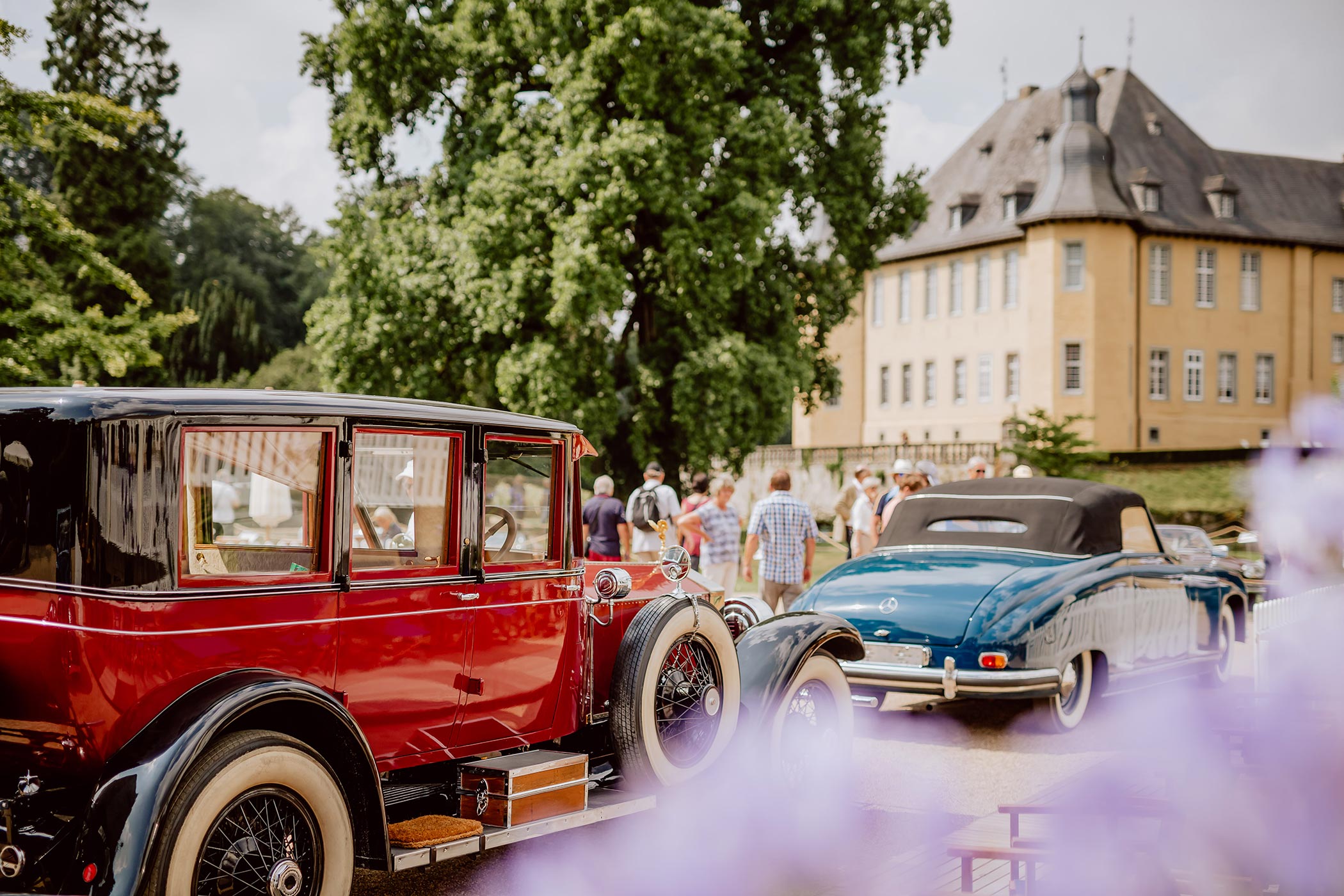

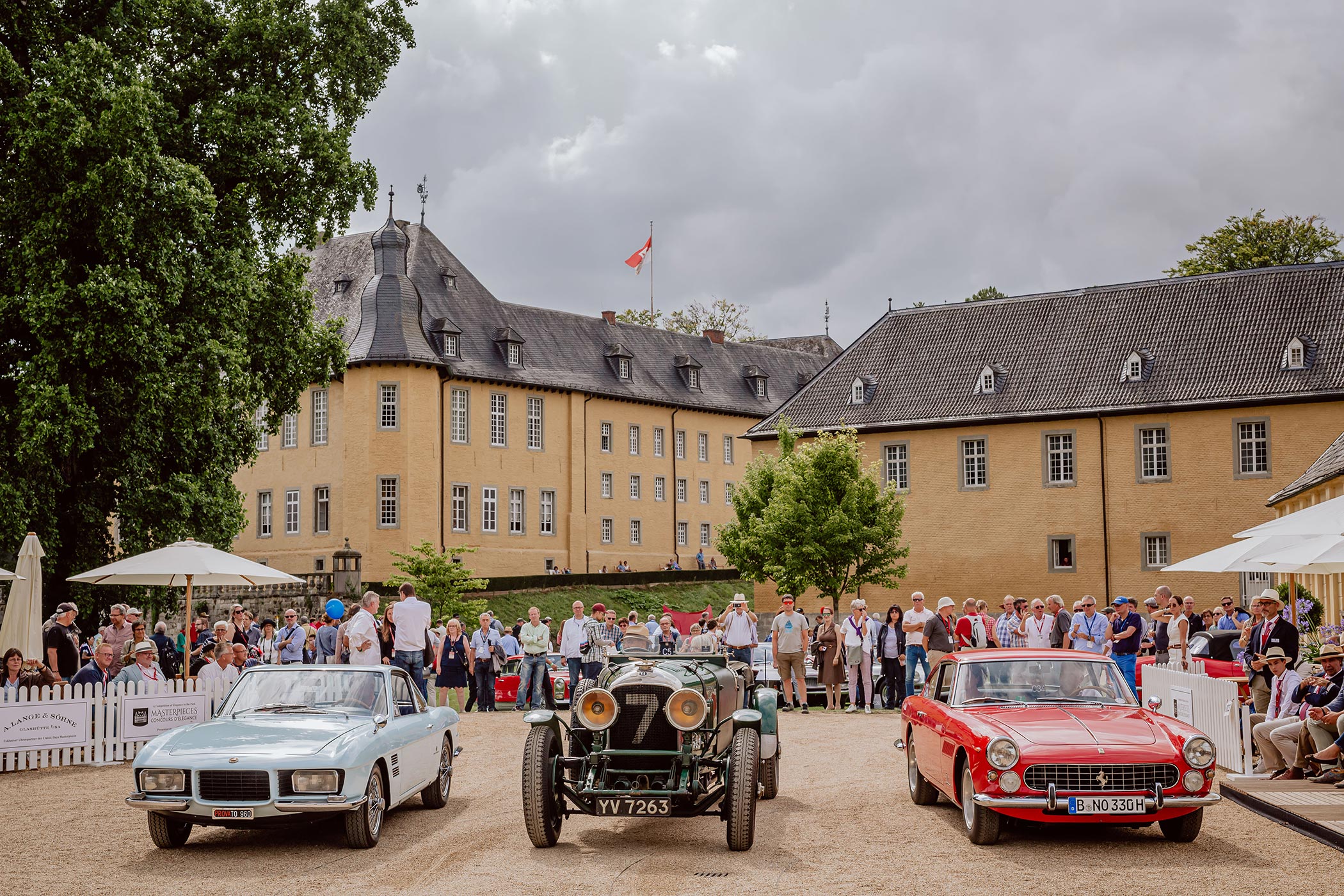
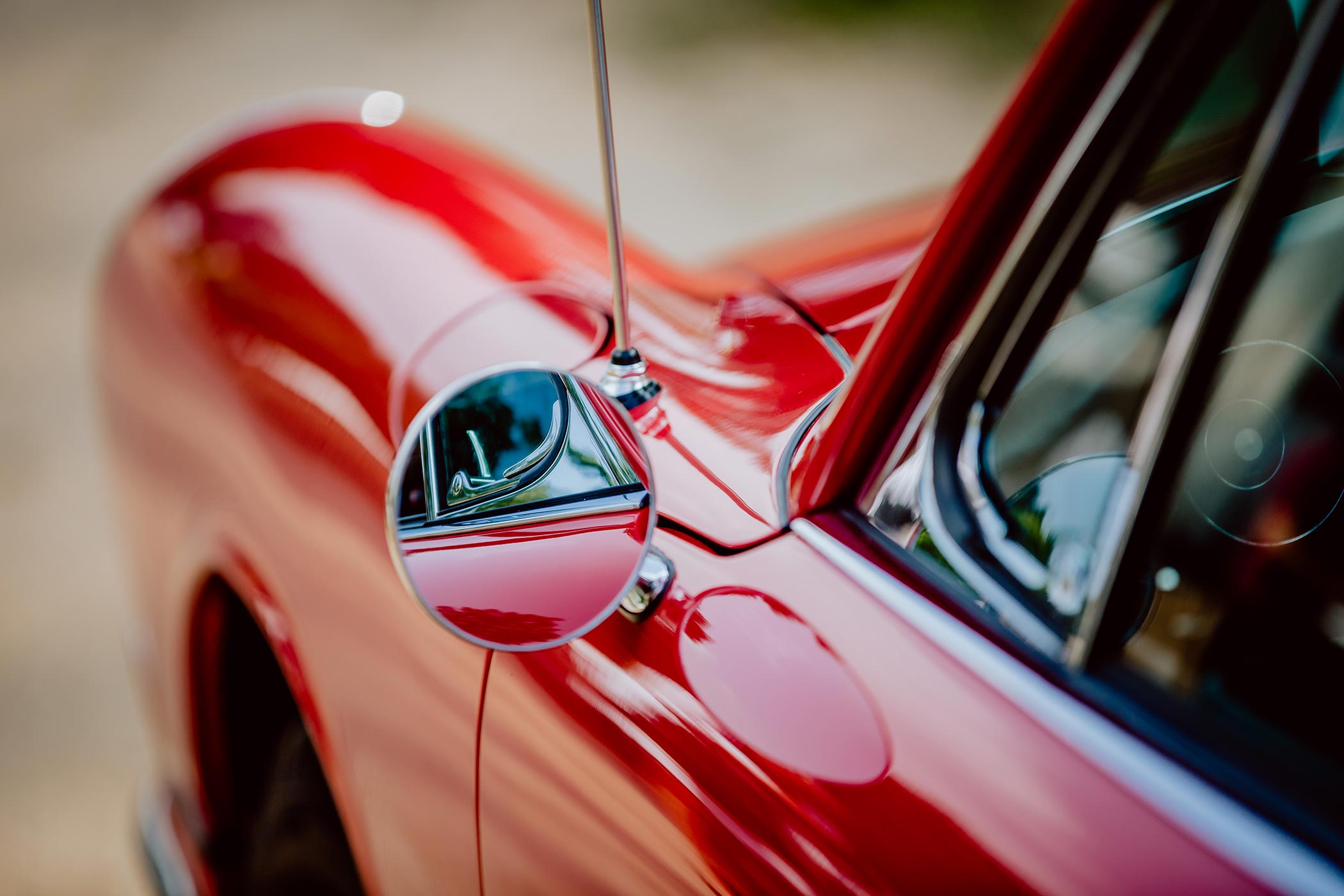
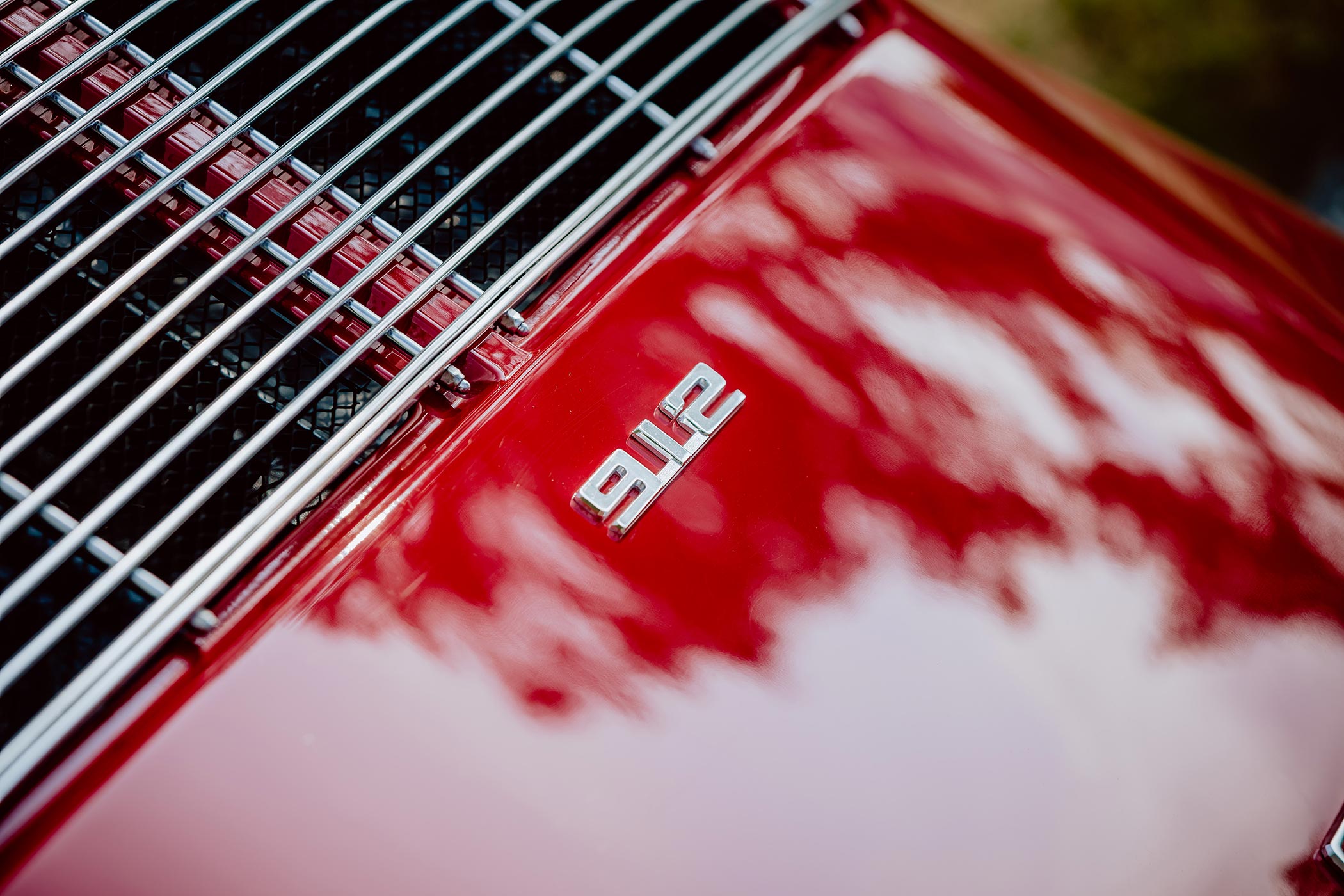

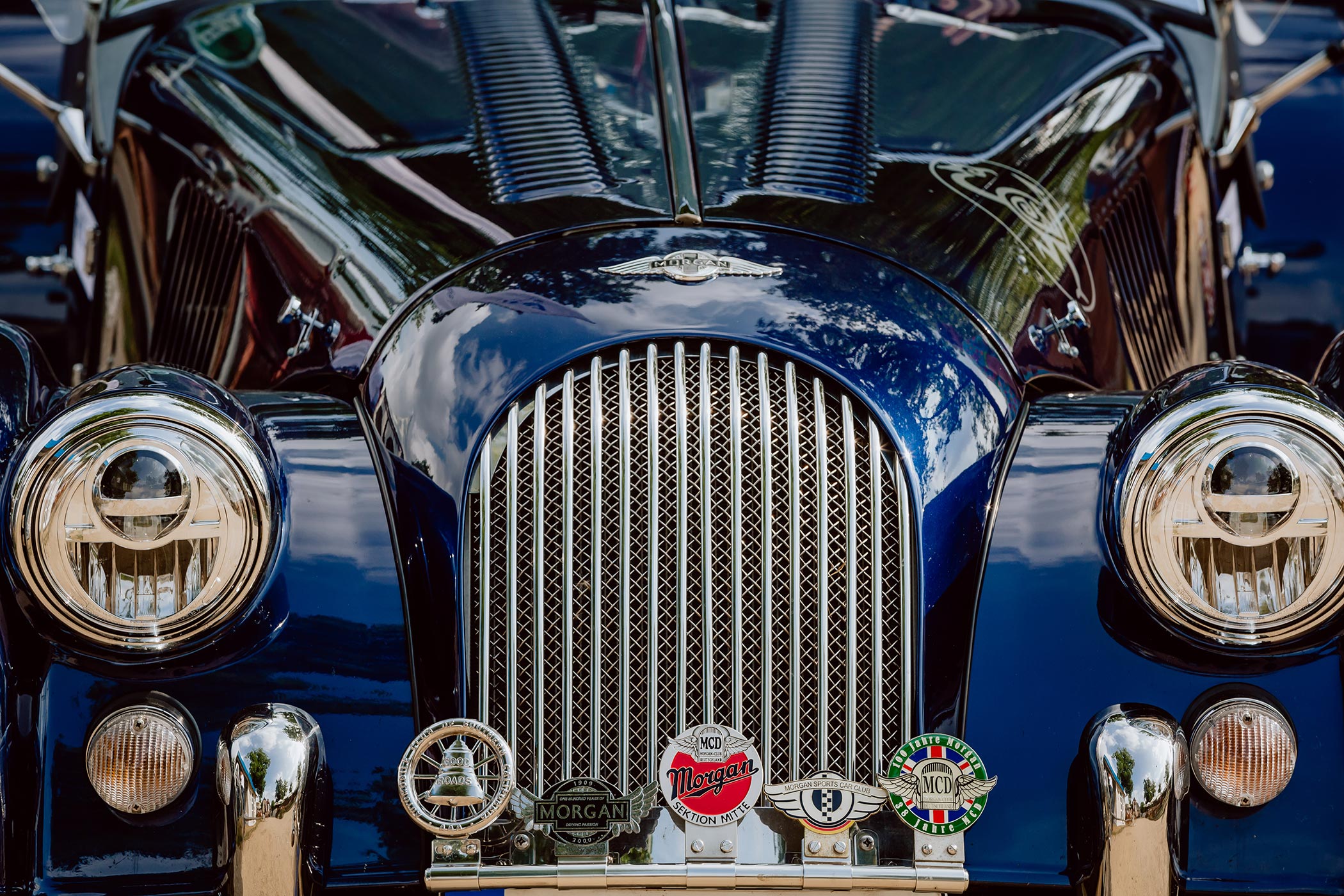
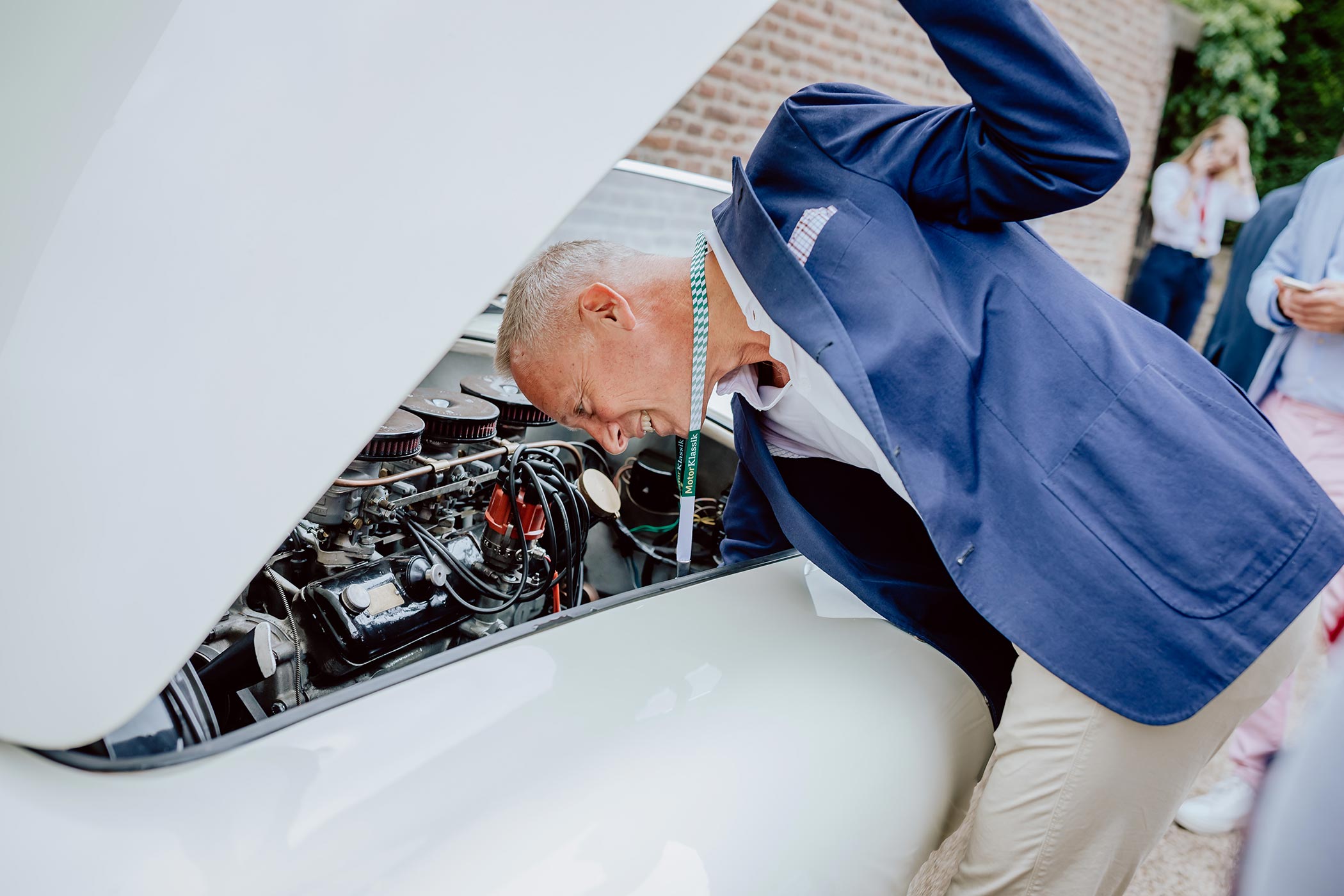
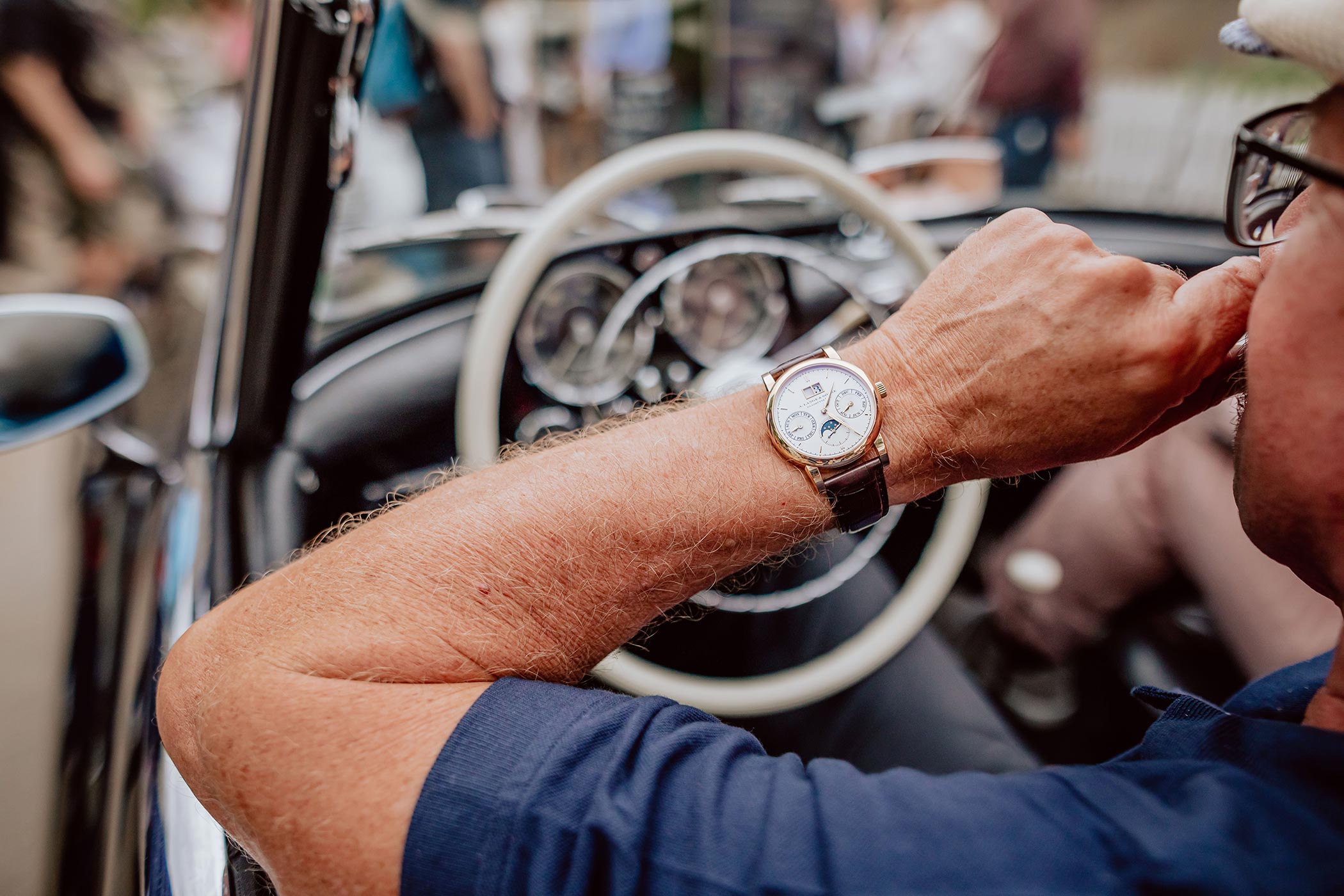
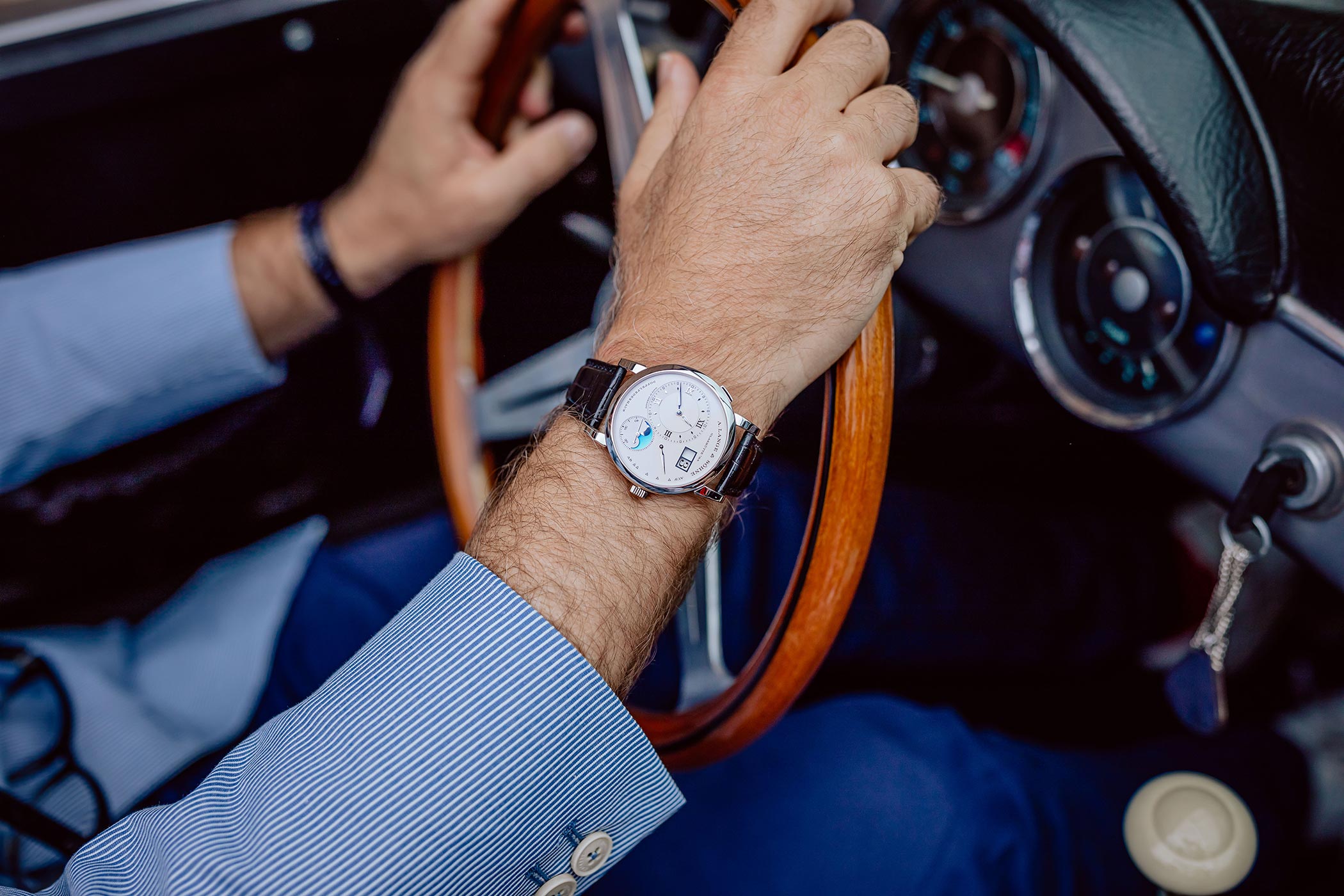
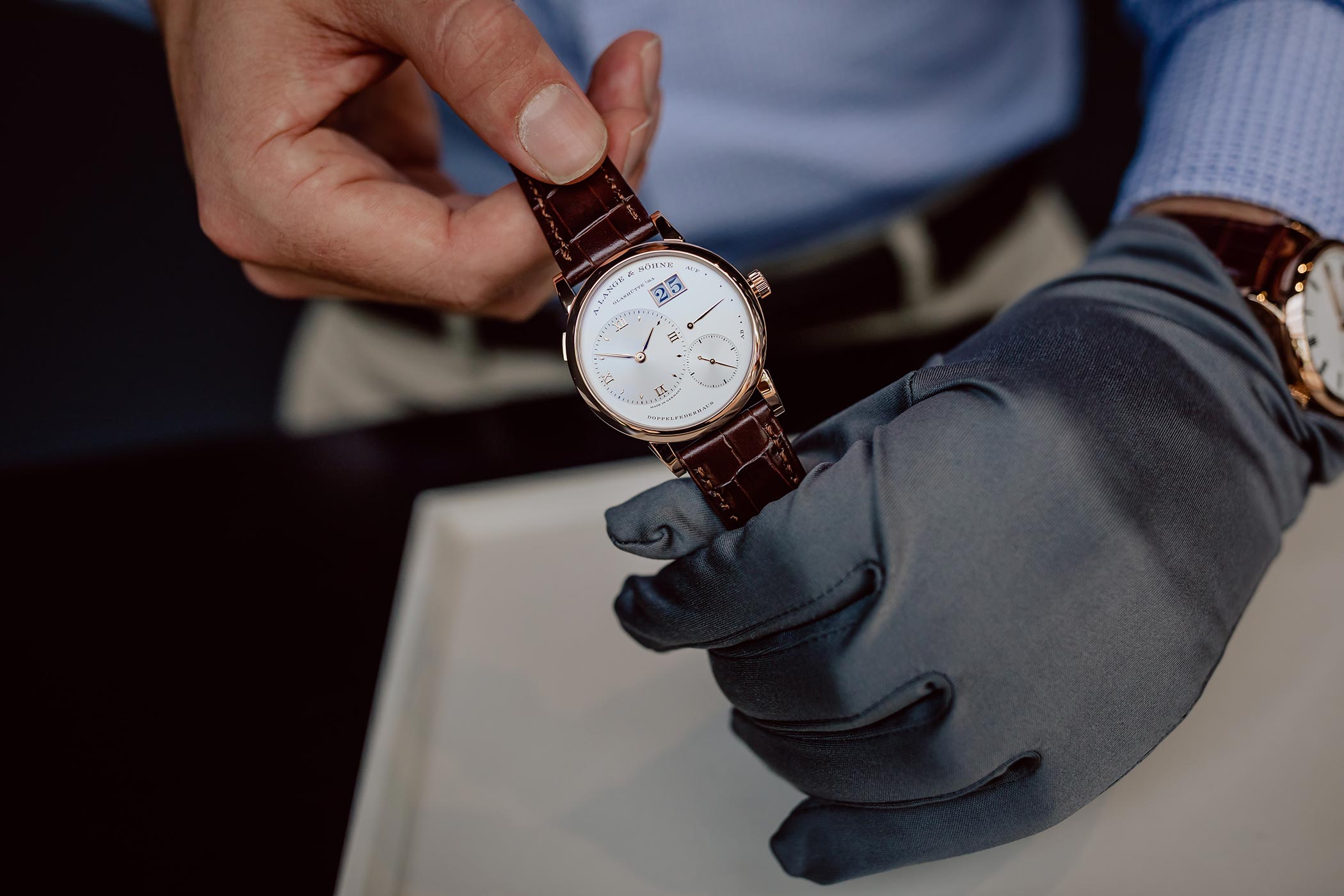
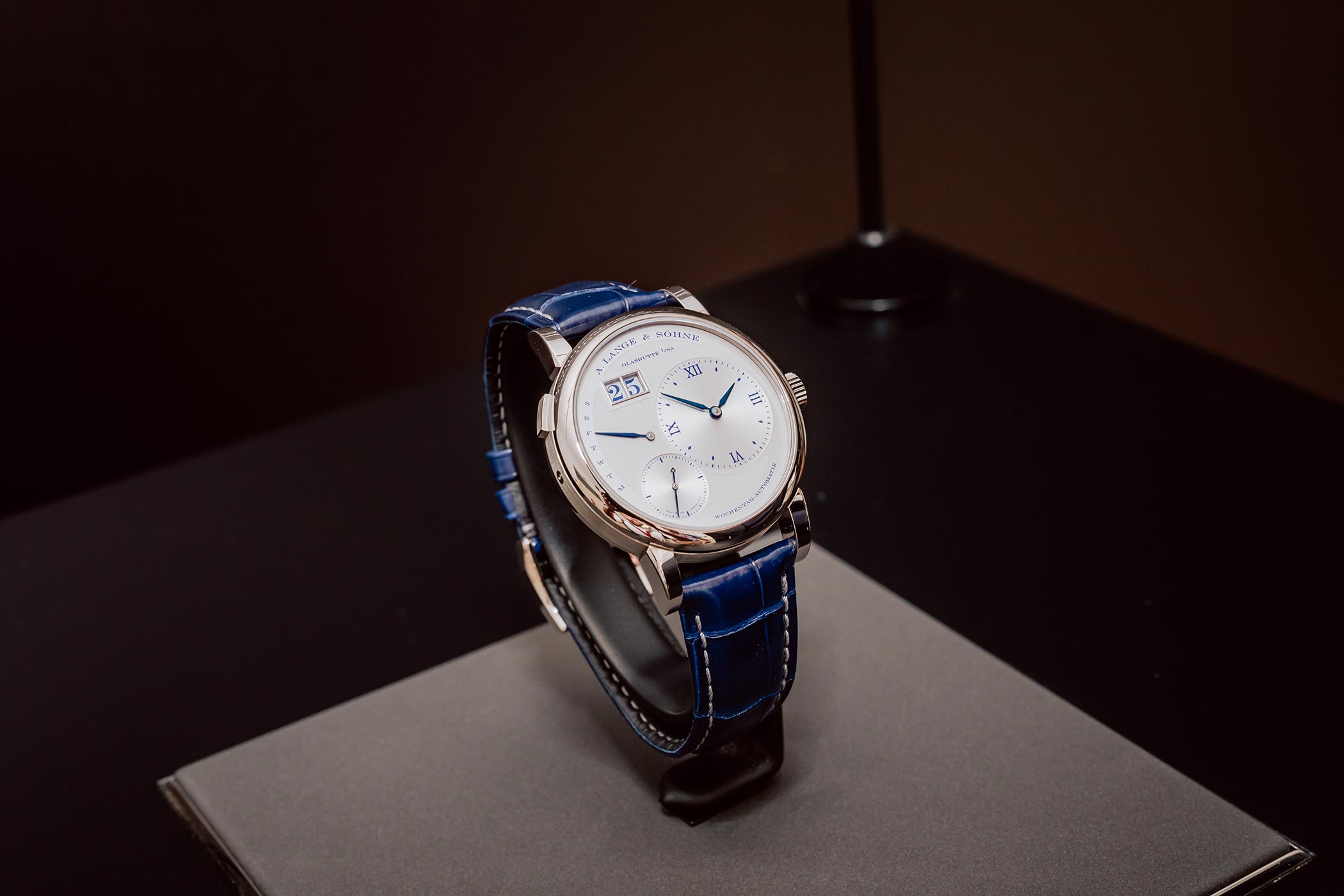
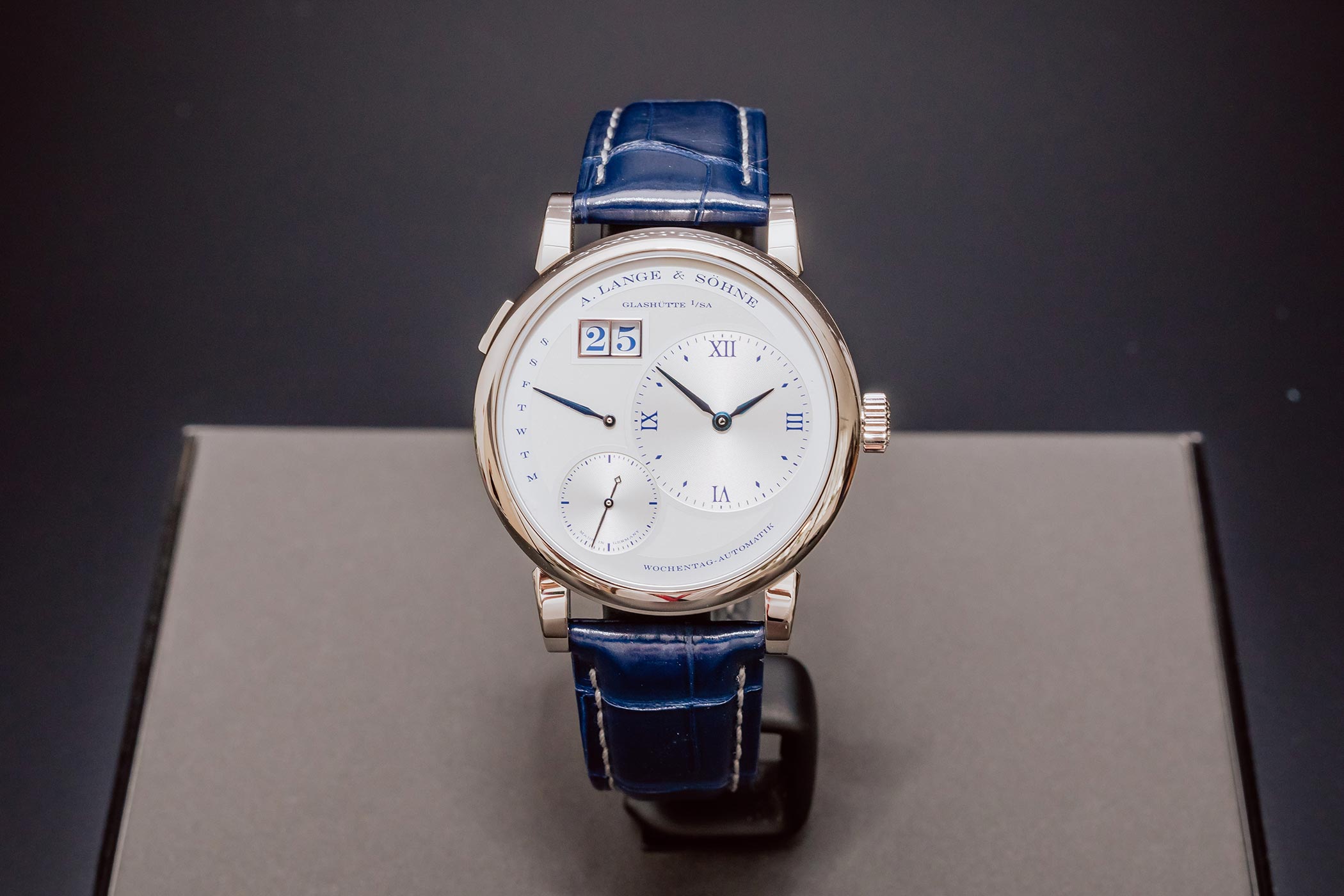
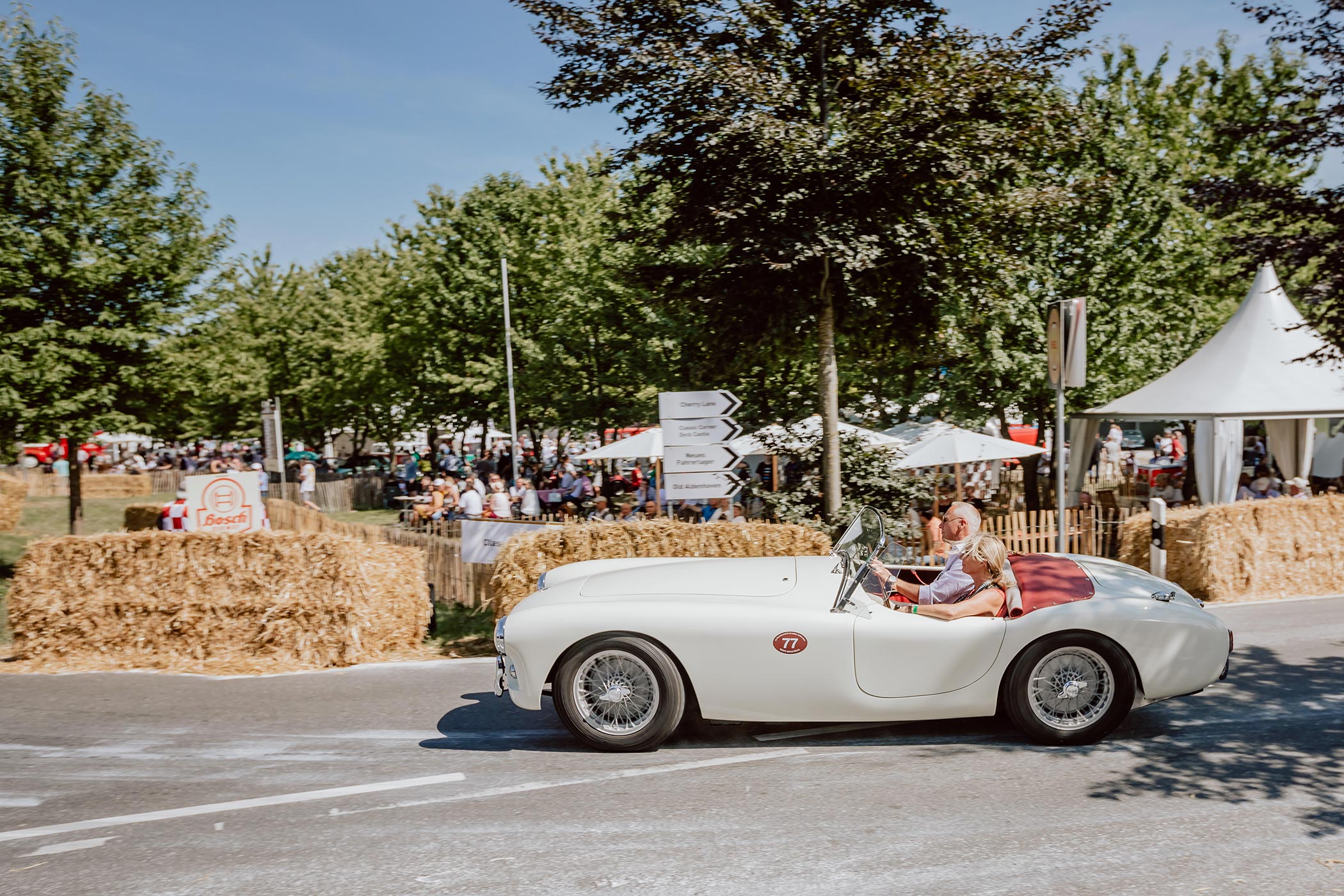
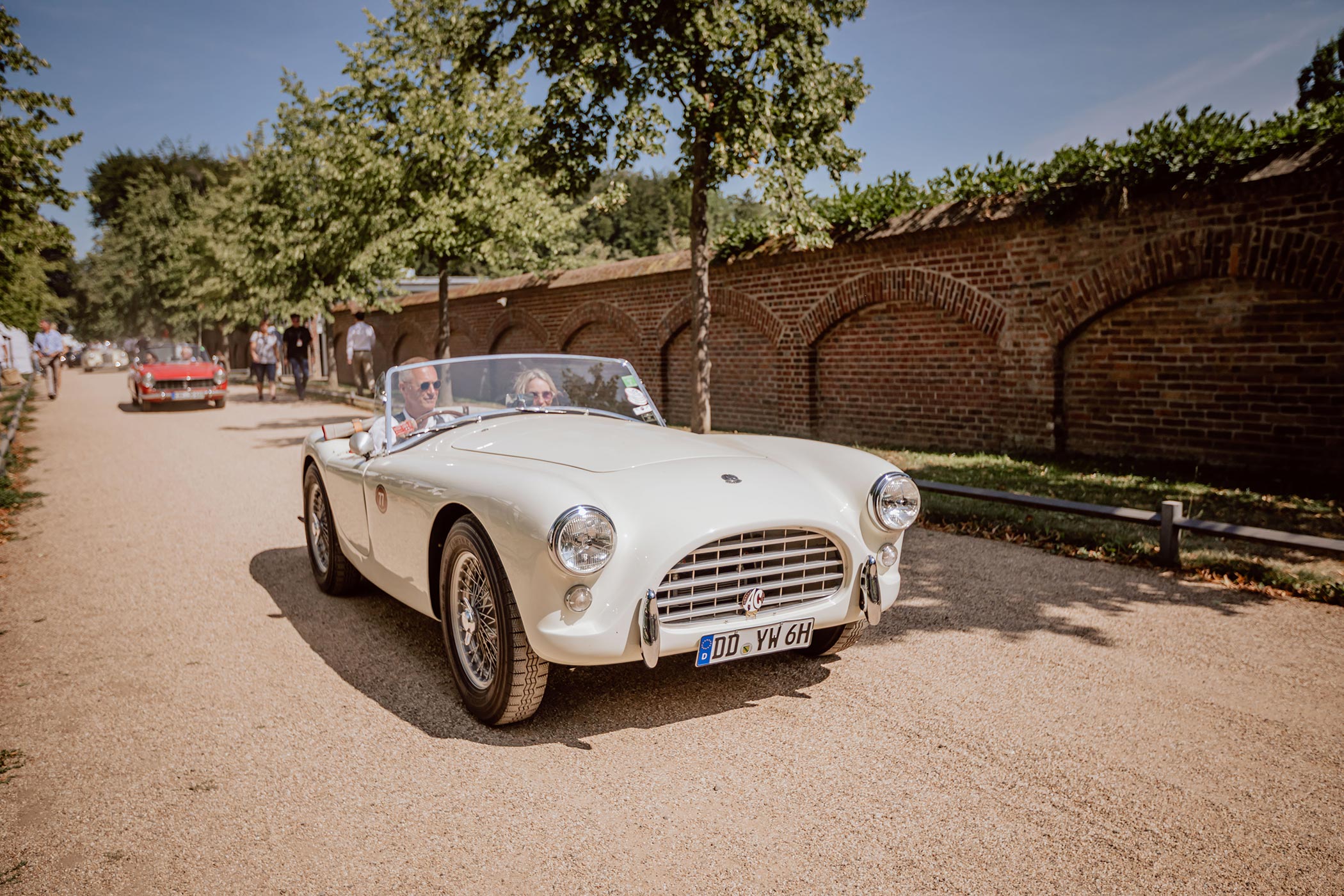



7 responses
Mr Bronkhorst, did you just fool me with an advertorial? Shame on you…um, me!
This article does seem a bit forced. Perhaps there should be a new “lifestyle” section to this website?
“Perfect Pancakes with Patek Philippe”
“Armagnac with Audemars”
“Sushi and Seiko: a sublime combination”
Feel free to contribute your own ideas guys. 🙂
I was sucked into the article about Germany starting with a picture of the only desirable car that Ferrari have made, thinking “It looks like a Dino but is it actually something German?” Then we see another Ferrari and a late 1920s Bentley (a toss up between The 1929 blower Bentley and the E Type Jaguar as the most desirable car ever made ) The best is probably something modern.
There we are , a comment not about watches to an article loosely connected to them.
Lovely article, I enjoyed reading it immensely. I visited Schloß Dyck myself a few times…
@JAGOTW
Bum wax with Breguet.
Sinking face-down into the luxurious leather, surrounded by a sweet perfumey redolence, I thought nothing *OW!* could make this experience any better, but then I looked *JEEESUS!* at my wrist and saw the fine guilloche on the dial. *AYA B*STARD* Just magical.
Case: 38mm diameter….
Dear Gil, thanks for your question. The honest answer is: no we didn’t. The enthousiasm is real and unpaid for. If we write a paid advertorial, we always mention it. We were invited to the Classic Days by A. Lange & Söhne, but we did not receive a fee or kickback in any form to write this article. We still hope you enjoyed reading the article – and our honest take on the show.
Thanks Ralf, glad you enjoyed the article and the concours!